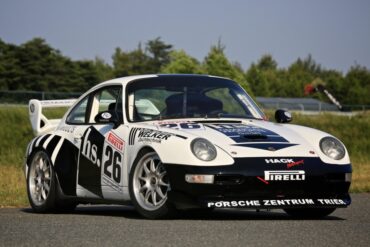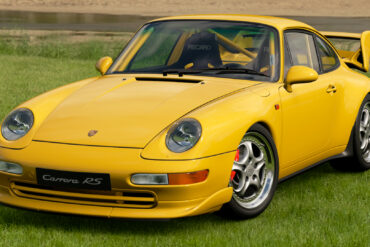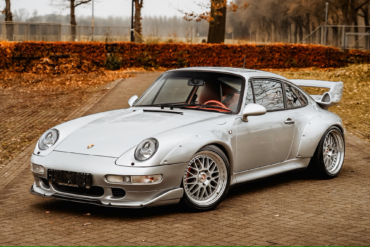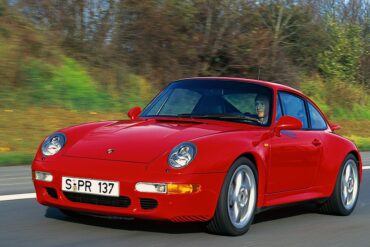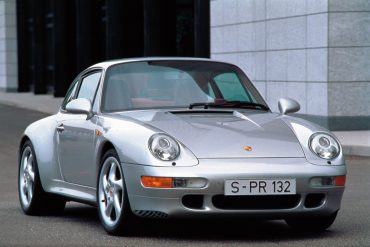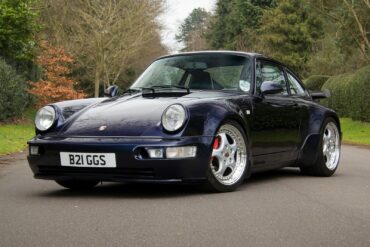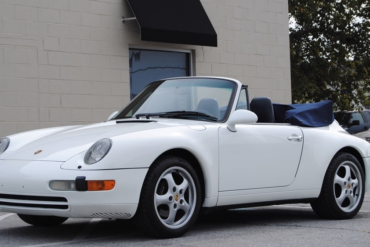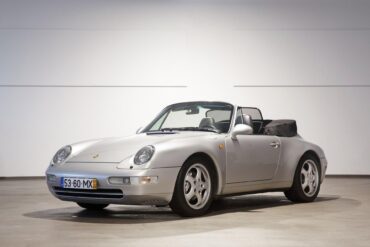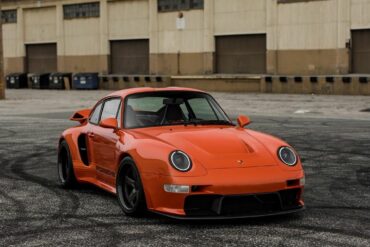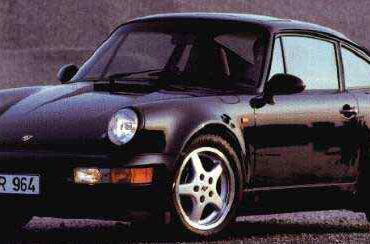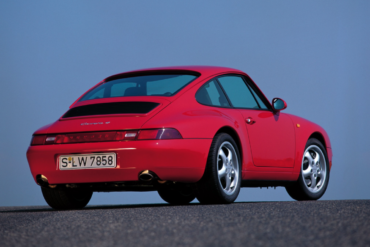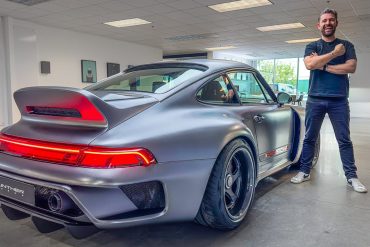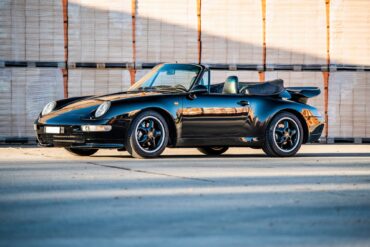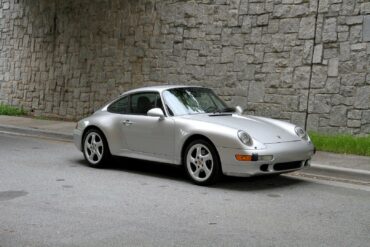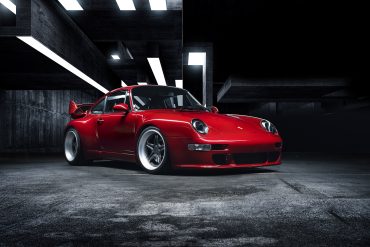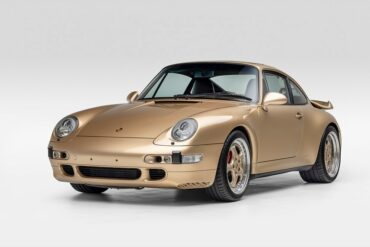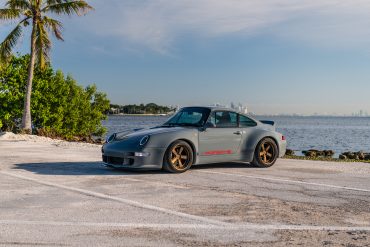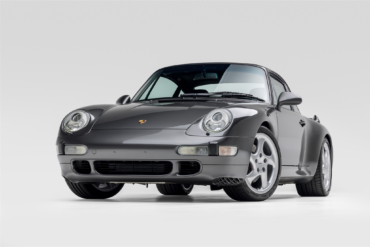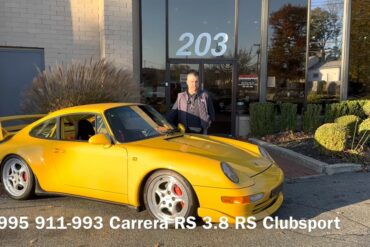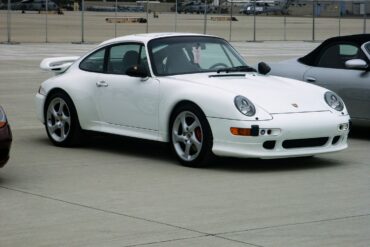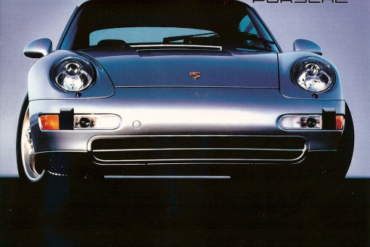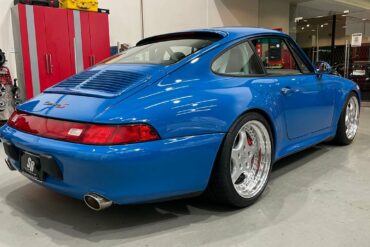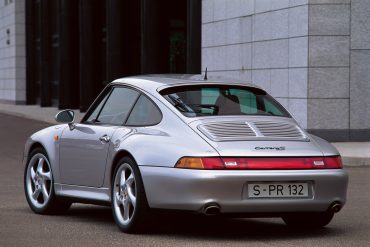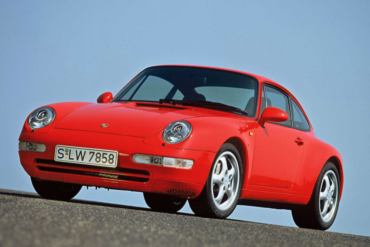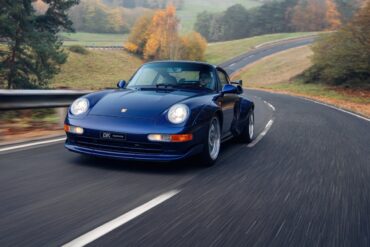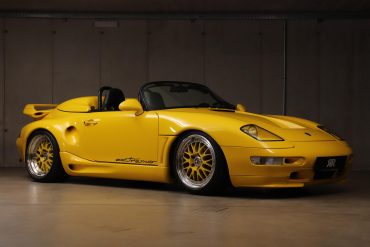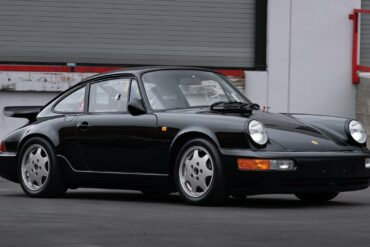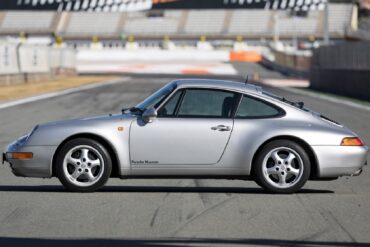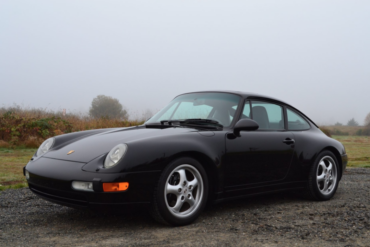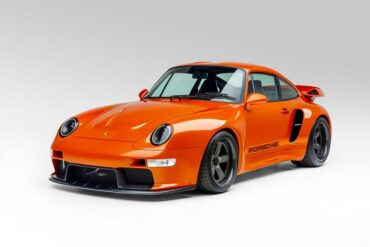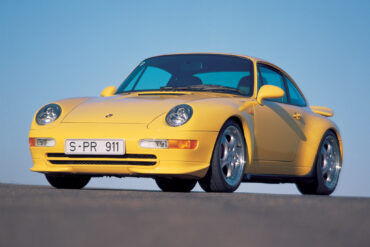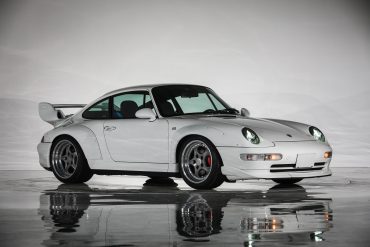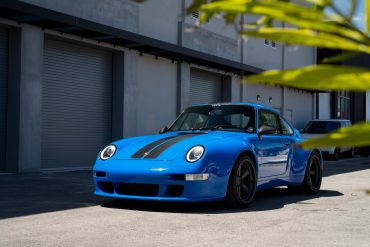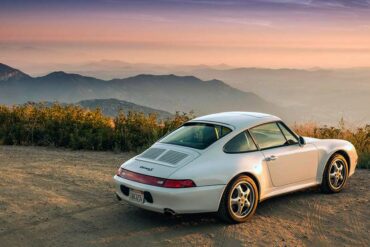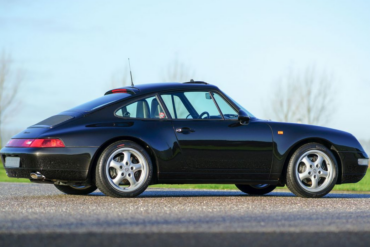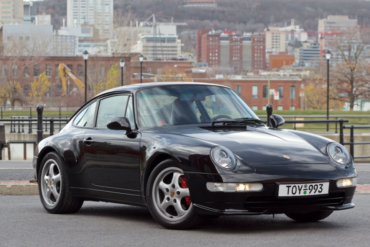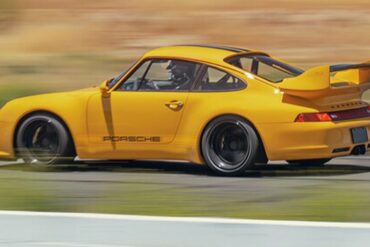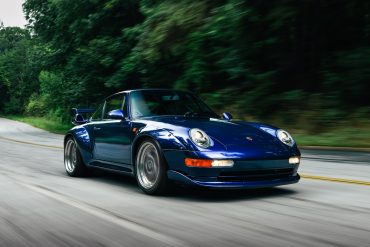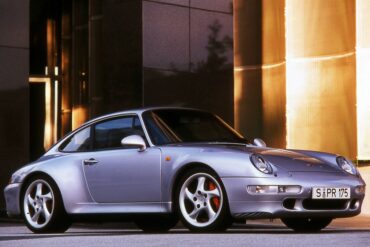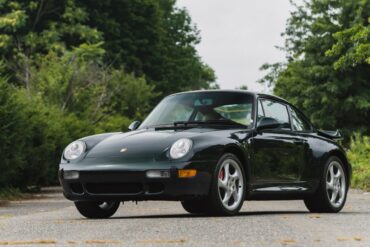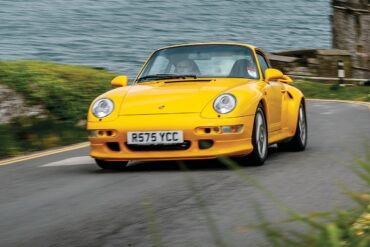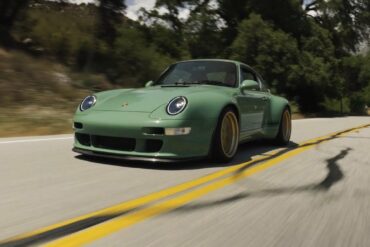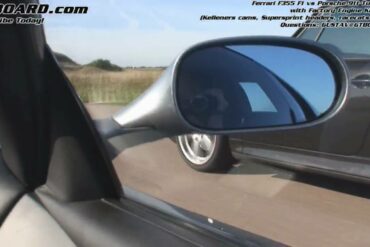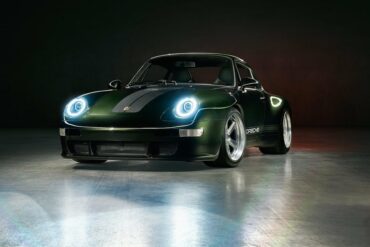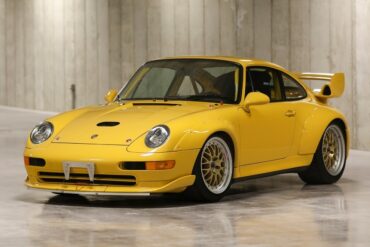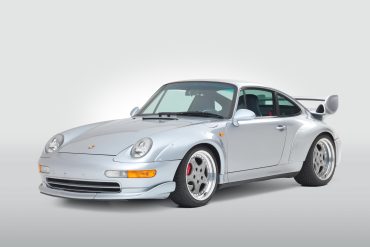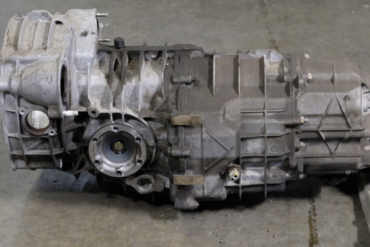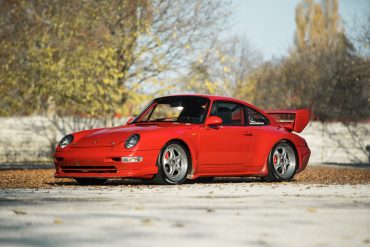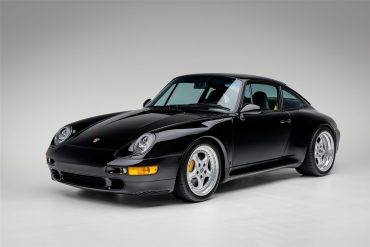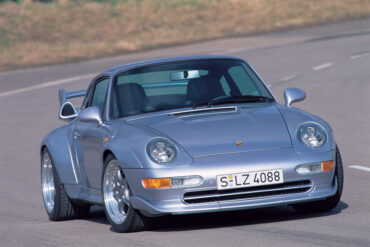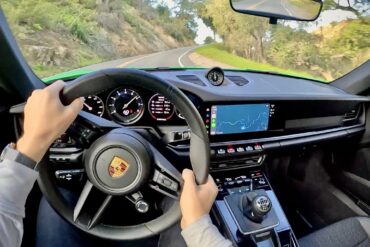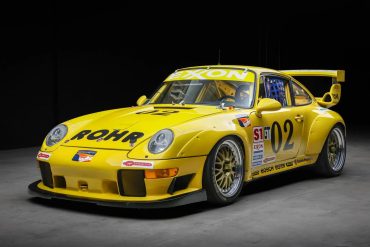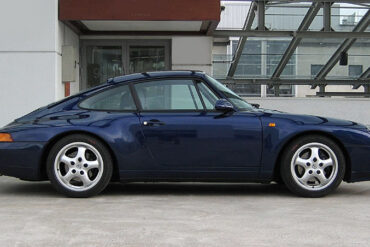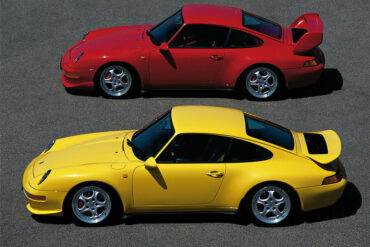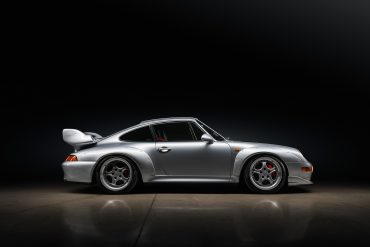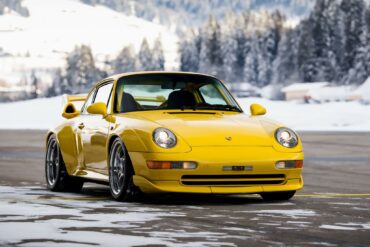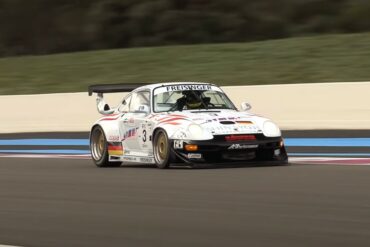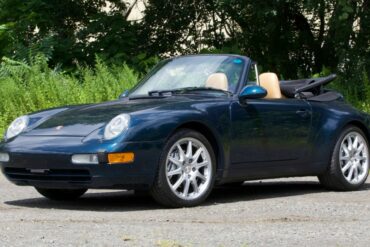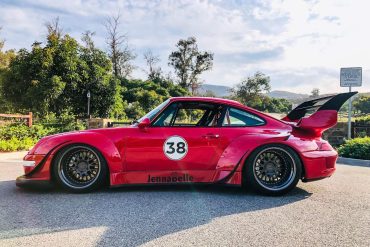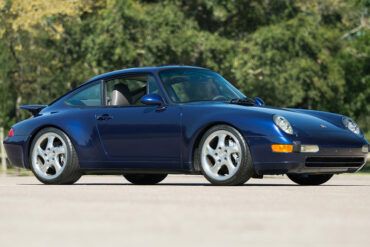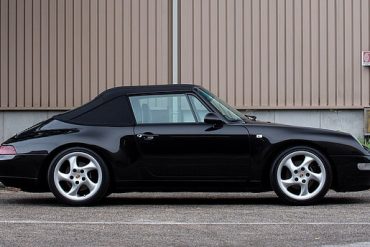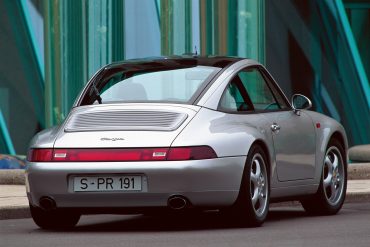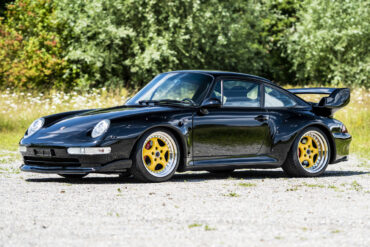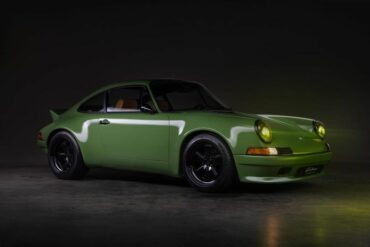993 Carrera Cup Champions & Results 993 Carrera Supercup 1994 Uwe Alzen Emmanuel Collard Jean-Pierre Malcher 1995 Jean-Pierre Malcher Jürgen...
911 Owner Stories: Dan and his 993 Carrera 4S At a young age, Dan Brunn moved from Tel Aviv to...
The Autoart 993R is a tribute to the driving experience of a 911. It brought together the narrow-bodied, air-cooled 993-series...
1995-1996 Porsche 911 Carrera RS 3.8 Clubsport (993) Technical Specifications Model Porsche 911 Carrera RS 3.8 (993) Model Years 1995...
This 1996 Porsche 911 (993) Turbo has been modified to resemble the iconic GT2 homologation special look that every car enthusiast...
Porsche Option Codes – Porsche 911 (1998 Model Year) Looking to decode your 1998 Porsche 911 option codes? Want to...
The Carrera S was the ultimate, naturally aspirated version of the Carrera 2. Porsche decided to offer something more to its customers when it launched the Carrera S version. It featured a stiffer and lowered suspension. Its wider tires made it better in the corners and faster around a race-track than its Carrera 2 sibling. The Carrera S took its bodywork from the Porsche Turbo. But it didn't get the turbocharger or the all-wheel-drive system. Its wider rear fenders and lowered stance than the Carrera lineup made it a desirable car for the Porsche fans. The engine was the same 3.6-liter naturally aspirated, but it was offered in the higher power output of 285 hp. The only transmission available was a 6-speed manual.
Porsche Option Codes – Porsche 911 (1995 Model Year) Looking to decode your 1995 Porsche 911 option codes? Want to...
1995 Porsche 911 Carrera Cabriolet (993) Technical Specifications Engine Type Flat 6 Induction Naturally Aspirated Cooling Air/oil-cooled Valvetrain Single overhead...
1998 Porsche 911 Carrera 4 Cabriolet (993) Technical Specifications Engine Type Flat 6 Induction Naturally Aspirated Cooling Air/oil-cooled Valvetrain Single...
Gunther Werks’ latest creation, Project Tornado, is a road-legal coupe that follows the company’s tradition of building models around the...
1993 Ruf BTR 3.8 In Detail submitted by Richard Owen engine Turbocharged Inloine-6 displacement 3746 cc / 228.6 in³ bore...
1997 Porsche 911 Carrera 4 (993) Technical Specifications Engine Type Flat 6 Induction Naturally Aspirated Cooling Air/oil-cooled Valvetrain Single overhead...
A couple of days ago, California-based specialist Gunther Werks revealed their latest creation, the Touring Turbo Edition Coupe, at The...
The Porsche 911 Turbo Cabriolet (993 generation) is an incredibly rare car – only 14 were built in 1995, in the early days of 993 production. Rather than the contemporary twin-turbo powerplant in the 993 Turbo Coupe, the 993 Turbo Cab was fitted with the single turbo of the 964 Turbo 3.6. Although the Turbo Coupé was introduced earlier, the actual production started after the Turbo Cabriolets were sold. Turbo Cabriolets were 1995 models by VIN and Turbo Coupés were immediately produced as 1996 models although the 1996 model year had not yet started.
1997 Porsche 911 Carrera (993) Technical Specifications Engine Type Flat 6 Induction Naturally Aspirated Cooling Air/oil-cooled Valvetrain Single overhead camshaft...
The Gunther Werks 400R is a modern version of Porsche’s last air-cooled 911 and is the first car from the...
The 993 Turbo was available between late 1995 to 1998. Powered by a twin-turbocharged 3.6 liter flat six, it was...
One of the limited run of 25 Porsche 911 models configured to the 400R standard by Gunther Werks will be...
Bring A Trailer is currently offering a gorgeous example of a 1997 Porsche 911 Turbo, one of the marque’s final...
Featuring the Speed Yellow finished Factory Clubsport 1995 911/993 Carrera RS 3.8 Clubsport. Concours-ready, 1 of only 227 examples built,...
1994-1998 Porsche 911 (993) Carrera, Carrera S, Carrera 4, Carrera 4S, Turbo Service Schedule This maintenance service schedule checklist is...
Porsche 911 Sales Brochures (Type 993) After lots of digging and searching, we have found only two Porsche sales brochures...
A Modern Take On A Timeless Carrera Welcome back to one of SR Auto Group’s first episodes on refreshing a...
Porsche 911 Spare Parts Catalogs (993, 1994 – 1998 Model Year) These official Porsche PET Diagrams and codes for the...
Porsche 911 (993) GT2 Driven Charles Morgan takes us through one of his favourite cars – the 911 993 GT2....
1995 Porsche 911 Carrera (993) Technical Specifications Engine Type Flat 6 Induction Naturally Aspirated Cooling Air/oil-cooled Valvetrain Single overhead camshaft...
Live now on DK Engineering is a one-of-one example of a 1996 Porsche 911 (993) GT2 finished in paint to...
The Porsche you see here is an exceptionally beautiful car and one of just two ever created by Gemballa GmbH,...
Porsche Option Codes – Porsche 911 (1996 Model Year) Looking to decode your 1996 Porsche 911 option codes? Want to...
1994-1998 Porsche 911 Engine Torque Directions This tightening torque specs list is ONLY for the following Porsche models and years:...
Porsche 911 (993) Technical Specifications & Model Comparison (European Variants) European specs 911 993...
Stunning Porsche 993 ‘GT2 RS’ by Guntherwerks Gunther Werks, the company that remasters the Porsche air-cooled 993 just announced their...
Tuthill Porsche has earned acclaim in the rally world, transforming road cars into formidable rally beasts. Notably, they collaborated with...
The 993 Carrera RS is a lightweight, stiffer version of the naturally-aspirated 993 Carrera meant for ultimate street performance. At its heart was the 3.8-liter normally aspirated Type M64/20 engine producing 300 bhp at 6,500 rpm along with 262 foot-pounds of torque at 5,400 rpm. Looking to save as much weight as possible, every non-essential item from the car was removed. The Carrera RS tipped the scales at a 1,280 kg. About 1,000 Carrera RS were built, making it one of the rarest and most collectable 993-generation 911's produced. In addition to the Base Trim it was also available as the race-ready, street legal, RS Clubsport (option M003).
The 993 Porsche 911 GT2 (or GT as it was initially called) was built in order to meet homologation requirements...
While many have modified the 911 over time, Gunther Werks stands apart, envisioning a scenario where Porsche continued refining the...
Porsche Option Codes – Porsche 911 (1997 Model Year) Looking to decode your 1997 Porsche 911 option codes? Want to...
1996 Porsche 911 Carrera (993) Technical Specifications Engine Type Flat 6 Induction Naturally Aspirated Cooling Air/oil-cooled Valvetrain Single overhead camshaft...
1995 Porsche 911 Carrera 4 (993) Technical Specifications Engine Type Flat 6 Induction Naturally Aspirated Cooling Air/oil-cooled Valvetrain Single overhead...
A Legend Remastered, Driven by Randy Pobst Randy Pobst gets behind the wheel of Gunther Werks’ Remastered 993 and dives...
If you want the ultimate version of the air-cooled 911, then you should get this 1996 Porsche 911 GT2 currently...
Porsche 993 Cup 3.8 RSR On Track Video dedicated to a 1995 Porsche 993 Cup 3.8 RSR driven by Ralph...
1996 Porsche 911 Carrera 4S (993) Technical Specifications Engine Type Flat 6 Induction Naturally Aspirated Cooling Air/oil-cooled Valvetrain Single overhead...
Porsche 911 (993) (1993 – 1998) Story & History Type 993 – The 4th Generation Porsche 911 Premiere: 1993 September...
1997 Porsche 911 Turbo S (993) Technical Specifications Engine Type Flat 6 Induction Twin-turbocharged Cooling Air/oil-cooled Valvetrain Single overhead camshaft...
The Gunther Werks 993 The Drive returns to the Gunther Werks headquarters to get an insider’s look at the new...
Ferrari F355 vs Porsche 911 Turbo (993) Ferrari F355 F1 vs Porsche 911 Turbo (993) with Engine Kit 430 HP...
Gunther Werks Dunkelgrun Commission – one of 25 remastered 993-generation 911s the custom shop will build. Photos by Gunther Werks...
1996 Porsche 993 GT2R Sold for $665,000 This yellow beauty sold at Pebble Beach by Gooding & Company for a...
Porsche 993 Turbo Gets A 2020 Refresh With HRE Wheels + More Goodies An interesting update to a classic 911....
The 993 Porsche 911 GT2 (or GT as it was initially called) was built in order to meet homologation requirements...
Porsche 911 (993) Transmission Codes The transmission number code is found on the transmission data plate. There were two codes...
The Carrera RS Clubsport, a track-oriented variant of the Carrera RS, prioritized performance over road comfort. Featuring a fully welded...
This 1997 Porsche 993 Carrera S finished in sleek Black with a black leather interior, underwent an extensive custom rebuild spanning...
The Porsche 911 GT2 (or GT as it was initially called) from the 993 Porsche series was built in order to meet homologation requirements for the GT2 class racing which had banned all-wheel-drive vehicles by the mid 1990's. As a two-wheel drive vehicle, the GT2 had significant weight savings as compared to the standard 993 Turbo from Porsche, making it instantly competitive in racing. The 993 GT2's original 3.6 L (220 cu in) engine generated a maximum power output of 316 kW (430 PS; 424 hp). There was an update in 1998 that upped power to 450 bhp.
Porsche 993 GT2 “Drive It Like You Stole It” Video I was invited by @9ine11 to check out his epic...
The 2023 992 Carrera T is Porsche’s model for those that want nothing more than a sports car that wants,...
Developed by Porsche to fulfill FIA GT racing homologation requirements, the 993 GT2 was derived from the 993 Turbo. It...
1998 Porsche 911 Carrera (993) Technical Specifications Engine Type Flat 6 Induction Naturally Aspirated Cooling Air/oil-cooled Valvetrain Single overhead camshaft...
1995-1996 Porsche 911 Carrera RS 3.8 (993) Technical Specifications Model Porsche 911 Carrera RS 3.8 (993) Model Years 1995 and...
The 993 Porsche 911 GT2 (or GT as it was initially called) was built in order to meet homologation requirements...
The GT2 was the hardcore, race-focused version of the 993 Turbo, using essentially the same 3.6 L twin-turbocharged engine, but...
The racing sportscar is prepared by Porsche following the Le Mans GT2 regulations for the over 1,150 kg weight classification. It features a 3.6-litre engine with two turbo-chargers (KKK 24 with 33.8 mm restrictors), which delivers around 450 hp at 5,750 rpm. Even this racing vehicle, with its suspension featuring a McPherson front axle and Porsche multi-link rear axle with LSA system, closely resembles its production relative. Utilizing a steel 993 Twin Turbo chassis with modifications for racing, scored numerous victories in a wide variety of racing venues.
1995 Porsche 911 Carrera 4 Cabriolet (993) Technical Specifications Engine Type Flat 6 Induction Naturally Aspirated Cooling Air/oil-cooled Valvetrain Single...
The third example commissioned at Rauh-Welt Begriff Los Angeles, “JennaBelle,” was individually crafted according to custom specifications by RWB’s founder,...
1996 Porsche 911 Carrera 4 (993) Technical Specifications Engine Type Flat 6 Induction Naturally Aspirated Cooling Air/oil-cooled Valvetrain Single overhead...
2,500 cabriolets were made in the 993 Carrera 4. The 993 Carrera 4, sold between 1995 and 1998, uses the same powerplant as the standard 993 Carrera, but puts power down to all four wheels through a 6-speed manual transmission. A “Carrera 4” badge on the tail, along with silver-painted brake calipers and clear front and side turn signals, help distinguish the all-wheel drive C4 from the C2 sibling.
1997 Porsche 911 Targa (993) Technical Specifications Engine Type Flat 6 Induction Naturally Aspirated Cooling Air/oil-cooled Valvetrain Single overhead camshaft...
The GT2 was the hardcore, race-focused version of the 993 Turbo, using essentially the same 3.6 L twin-turbocharged engine, but slightly modified with increased power output. The car was made to compete in the FIA GT2 racing class. Among this already very exclusive circle of 57 cars there is an even more rare community. 20 of the 57 road-legal cars were produced in a second – and last – badge with upgraded engine power (450 PS) called GT2 “Clubsport” which make them the last Porsche models with air-cooled engines.
Commissioned for ‘Mr. Le Mans’ Tom Kristensen, the Kalmar 7-97 is an homage to the Danish driver’s inaugural Le Mans...
No More Content


